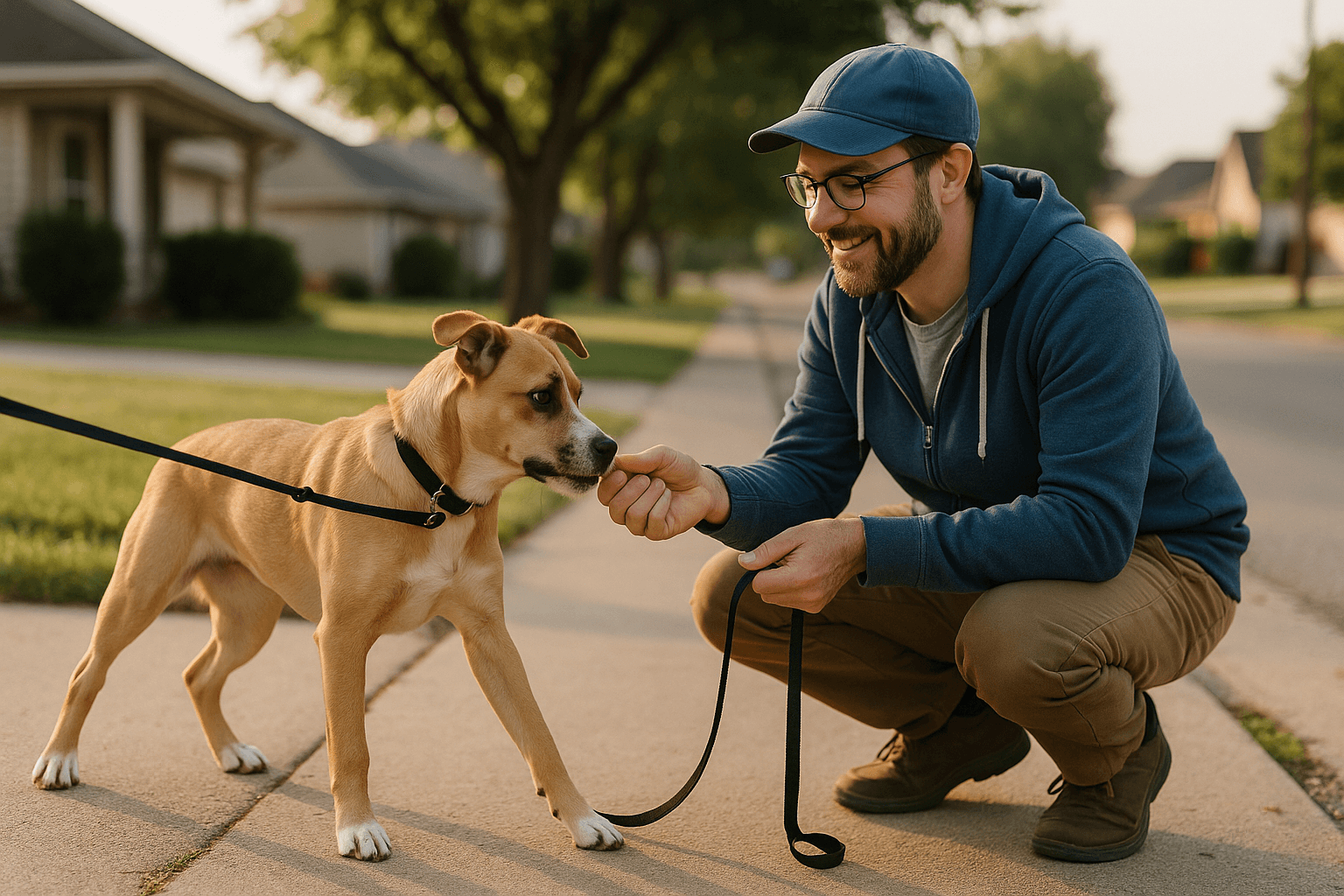If your dog turns every walk into a tug-of-war or a complete sit-in protest, you’re not alone—and you’re not failing. Leash training a stubborn dog is more common than you might think, and with the right approach, it’s totally doable. Let’s turn your daily walks into tail-wagging adventures with these expert-backed strategies!
Why Are Some Dogs So Stubborn on Leash?
Just like humans, dogs have different personalities. Some are naturally independent or reactive, while others might’ve had past trauma or simply weren’t taught proper leash manners. My own rescue pup, Benny, refused to move more than five feet during our first week of walks. Now? He trots beside me like a champ—and your dog can too.
Step-by-Step Leash Training Guide for Stubborn Dogs
Here’s a simple, positive approach that builds trust and encourages good leash behavior:
- Start Indoors: Begin training in a quiet, distraction-free space. Let your dog wear the leash around the house for short periods.
- Use High-Value Treats: Think freeze-dried liver, boiled chicken, or cheese cubes. Reward frequently when your pup walks beside you or checks in.
- Use a Marker: A clicker or verbal cue like “Yes!” can mark good behavior clearly.
- Short Sessions: Aim for 5–10 minutes at a time, especially in the early stages.
- Gradual Exposure: Move from indoors to the backyard, then to quiet streets before attempting busier environments.
Best Techniques for Leash Pulling
If your dog constantly pulls, try these proven techniques to stop the tug:
- “Be a Tree” Method: Stop walking the moment your dog pulls. Don’t yank—just stand still. When they relax the tension, reward and move forward.
- Direction Change: Change direction unpredictably. This teaches your dog to pay attention to you.
- Use a Front-Clip Harness: Tools like the Easy Walk harness discourage pulling safely and effectively.
- Keep Them Engaged: Talk to your dog, use treats, and keep them focused on you, not squirrels.
Leash Training Tips for Difficult Dogs
Every dog is different. Here’s how to personalize your approach:
- Know Your Dog's Triggers: Some dogs react to other pets, noises, or smells. Avoid overstimulating spots at first.
- Exercise Before Walks: Burn off some energy with a game of fetch or tug at home.
- Use Scent Walks: Allow some sniffing time. Mental stimulation can reduce stubbornness.
- Stay Calm: Dogs sense our frustration. Patience and consistency go further than punishment.
What to Avoid When Leash Training
- Yanking or jerking the leash
- Using prong or choke collars
- Yelling or scolding
- Expecting perfection too quickly
Helpful Products for Leash Training
- Front-clip harness: Great for redirecting without pain
- Training pouch: Keeps treats handy for fast rewards
- 4-6 ft leash: Offers control while allowing movement
Real-Life Example: From Stubborn to Superstar
Meet Luna, a 3-year-old husky mix who’d freeze every time she saw a leash. Her owner followed a step-by-step leash training guide and used boiled chicken as a reward. Within three weeks, Luna began walking calmly on a loose leash—and even wagged her tail at walk time!
Final Thoughts
Learning how to leash train a stubborn dog takes time, patience, and the right techniques. Stay consistent, celebrate small wins, and remember: stubborn isn’t bad—it just means your pup needs a bit more guidance and love.
Want to keep the momentum going? Check out more healthy treats for dogs to use during training sessions!
Frequently Asked Questions (FAQs)
1. What’s the best leash for a dog that pulls?
2. How long does it take to leash train a stubborn dog?
3. Can I leash train an older dog?
4. Why does my dog refuse to walk on a leash?
5. Should I punish my dog for pulling?
6. What are signs my dog is improving?

About SniffnTail
SniffnTail is your go-to destination for everything pets. From helpful advice, tips, and insights to thoughtfully selected products and resources, we’re here to support pet owners at every stage of their journey. Whether you're caring for a playful pup, a wise old cat, or anything in between, SniffnTail offers tools and knowledge to make pet parenting easier and more joyful.
Related Articles
 Training & Behavior • 5 mins Read
Training & Behavior • 5 mins ReadWhy Microchipping Matters More Than Ever
Picture the devastation of losing your dog — only to discover there's no possible way for someone to recognize and return your pet. Microchipping is where that ends. As a permanent, foolproof form of pet identification, microchipping your dog greatly improves the possibility of safe return should they ever get lost or stolen.
 Training & Behavior • 7 min read
Training & Behavior • 7 min readManaging Hypervigilance and Overstimulation in Border Collies
Learn how to manage hypervigilance and overstimulation in Border Collies using expert-backed calming techniques. Explore their environmental sensitivity and noise reactivity, and how to build a soothing routine.
 Training & Behavior • 5 mins Read
Training & Behavior • 5 mins ReadHow Much Exercise Does Your Dog Need? A Complete Guide for Dog Owners
Whether you're a new pet parent or an old dog hand, one of the most frequently asked (and important) questions is: How much exercise does my dog require? Similar to humans, dogs need ongoing exercise in order to remain happy, healthy, and mentally stimulated.

